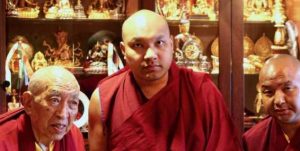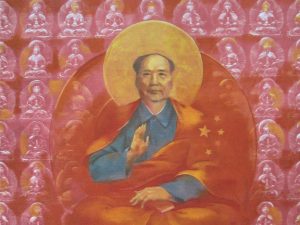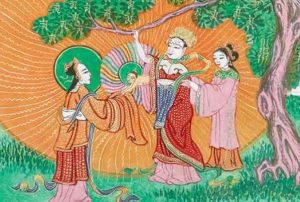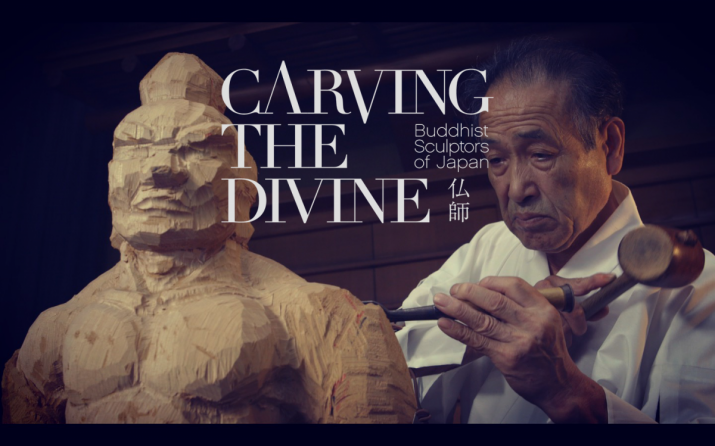
For more than a millennium, since the glory days of Kyoto and Nara Buddhism, a unique spiritual calling has endured in Japan, although its popularity has waned. This is the discipline of the busshi, carvers of statues depicting buddhas and bodhisattvas. Through his soon-to-be released film Carving the Divine, Yujiro Seki, a Japanese-born filmmaker based in Los Angeles, provides a window into the lives of busshi in contemporary Japan, many of them young people who have committed themselves completely to the art. The documentary, perhaps the first to focus comprehensively on Japanese Buddhist sculptors, follows a small group of apprentices studying in the lineage of grandmaster Kourin Saito.
“It is my absolute honor to present this movie to the world, portraying one of the most important—or arguably the most important—spiritual arts of Japan and the artists who carve these divinities,” said Yujiro, who has a bachelor’s degree in filmmaking from UC Berkeley. “In fact, this project has also become ‘divine’ to me; it truly fills me with a great sense of purpose. I’ve poured my heart and soul into this project, but not for my personal glory. In the film I see something bigger than myself. My physical body will one day decay and disappear but as an artist I aspire to leave behind work that is not temporal but eternal. Carving the Divine has given me that opportunity.”
Woodcarving is not a trivial activity. The clients (who may be temple heads, Buddhist masters, directors of Buddhist charities, or lay donors) expect the highest quality of craftsmanship, and great shame befalls the busshi that produces an inferior product. For each client, each statue is not simply an aesthetic masterpiece, but a channel or repository of the bodhisattvas.
Apprentices work in an atmosphere akin to a military fraternity. “As a profession, being a busshi brings more pain than joy,” reflects one of the artists. There is little patience or compassion for apprentices who cannot handle how the busshi center is run: “We won’t calmly teach you,” he further cautions. “We’ll yell at you if you do something wrong.” And yelling there is. The teacher-student relationship is not and cannot be one of equals. Aside from sloppy work, minor infractions such as forgetting to bring a full tool kit, leaving a room untidy, or even not responding to instructions respectfully and immediately are met with an angry rebuke. The Japanese language might not have the same range of swear words as English, but to Japanese ears, the way errant students are scolded might as well be a stream of profanities.
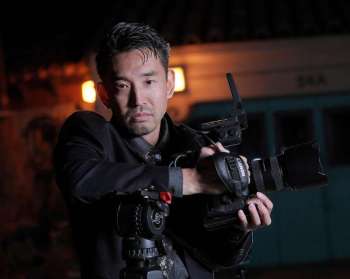
Yujiro agrees with the narrative that this work is to be taken seriously. “First and foremost, the life of an apprentice is tough. The teacher demands obedience and single-minded dedication. It is not a school with a curriculum. The apprentice must quickly and quietly ‘steal’ the techniques of the master and seniors by observation,” he says. “This is a life of never-ending, monotonous work. The apprentices wake up very early in the morning, prepare and eat breakfast, clean, work for the masters in the morning, prepare and eat lunch, and work for masters again in the afternoon. In the evening and into the night they continue working on their own projects. This daily schedule is repeated every day for many years.”
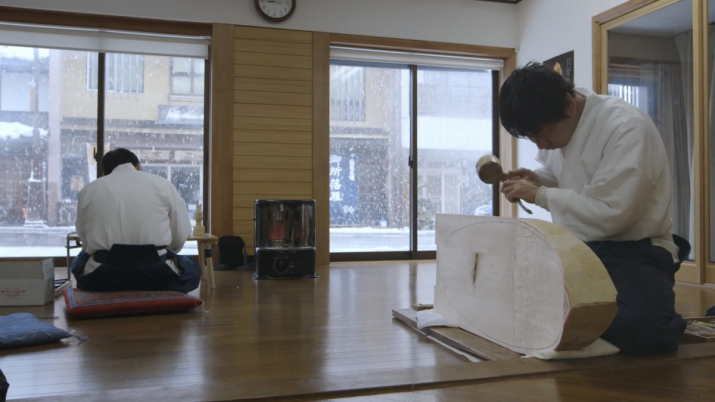
Hammering home the parallels between the busshi school and a Renaissance-era trade guild, Yujiro explains: “It’s a world of survival of the fittest. If you want to learn and do more important tasks then you must get ahead of your colleagues. The better you get, the more important jobs you will be assigned. If you don’t improve you will keep doing the same menial tasks, or even less important tasks, if your colleagues surpass you in skill. This is a tough world. Only those with dedication, commitment, and speed can get ahead.” Furthermore, there is nothing in the busshi “industry” to help students find employment or commissions. Traditionally, these techniques have only been passed down through the apprentice system. As far as Yujiro has seen, different lineages do not mingle much and do not openly share their knowledge and techniques with one another.
The most important relationship for a busshi to maintain, much like in martial arts, is with their master. Yujiro notes that a master will often give a subset of his commissions to former apprentices, which can help a lot in the early years of independence. In reality, a 3–5 year apprenticeship is not enough for most apprentices to be truly independent: “I would say it takes at least 10 years to reach that level and build a solid foundation as a busshi. Support from their master and others within their lineage is critical.”
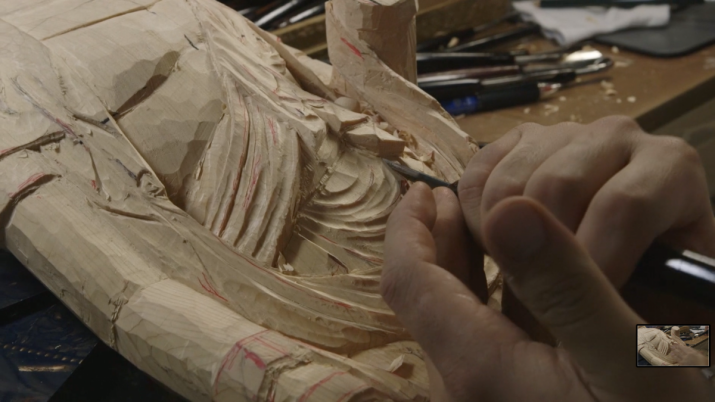
Making a documentary is always a challenge. For Yujiro, shooting and editing demanded effort, time, money, and luck: “Putting this together almost single-handedly was a great challenge, particularly shooting and organizing the incredibly vast and wide-ranging content. It was important for me not to misrepresent or overgeneralize the depth and subtleties of the busshi community. Many documentaries out there oversimplify complicated subject matters. I did not want to do that.”
Another challenge for Yujiro was finding a story to share based on the fairly mundane busshi lifestyle. Despite its high stakes, the act of carving is actually tedious, repetitive work: “I didn’t want the movie to turn into a ‘how to sculpt’ tutorial. Telling a multi-dimensional story of Japanese Buddhist sculptures was very difficult, but after about a year of intense editing our post-production team felt really good about what we were able to achieve in that respect.”
Yujiro notes that feedback on the film—officially yet to be released—has been positive. “A painter told me that he personally identified with the apprentices and remembered learning his craft in art school. A monk agreed with a message in the film: that greater international recognition of Japanese Buddhism would lead to renewed recognition at home. A father praised the carvers’ discipline and work ethic, and hoped that his children could exhibit the same qualities. One retired businessman and amateur stone sculptor told me that he was mesmerized by the process of the art and actually dreamed about carving that night. As a filmmaker, I am truly moved to hear distinctive opinions.”
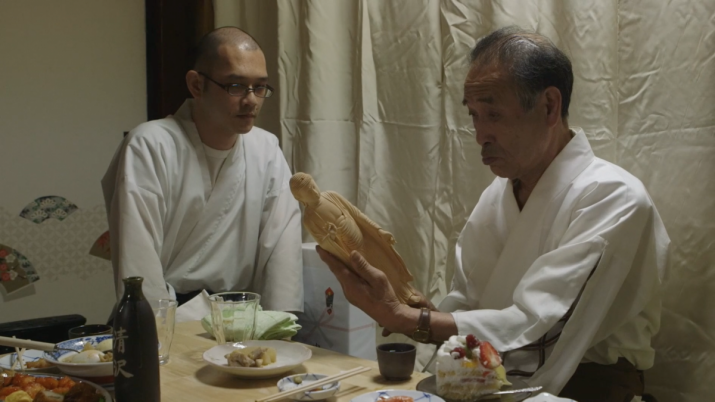
Much of Yujiro’s time is now spent riding the beast of social media, which he has never done so diligently until the completion of Carving the Divine. He also faces the unenviable situation of promoting the film to the public while at the same time submitting it to film festivals, which require entries to be previously undistributed. Much like the busshi’s devotion to their art, this film is now Yujiro’s singular focus: “I am truly living in the moment and cannot think about other projects right now. It took a long time for me to find a sense of purpose in my life. I was lost, confused and hopeless. Now, I am filled with a vision, not only to promote Carving the Divine but the entire culture of busshi and butsuzo.
“I will die one day. That’s inevitable. But when that happens my greatest joy will be the knowledge that my work survives me, to be appreciated by people who come thereafter. This is what I’m currently striving toward. If I die now, my art will die too. I cannot let that happen. I think only of Carving the Divine, nothing else.”
See more
Carving the Divine
Carving the Divine trailer (YouTube)
Carving the Divine (Instagram)
Carving the Divine (Facebook)
Carving the Divine (Twitter)
Carving the Divine TV (YouTube)—Hosted by filmmaker Yujiro Seki, Carving the Divine TV is a series of Q&A sessions with Buddhist scholars and practitioners. These Q&A sessions explore the basic concepts of Buddhism and the history of Buddhism so that viewers can enjoy a more contextualized viewing of Carving the Divine.
Butsuzotion—A blog dedicated to Japanese Buddhist sculpture appreciation. This blog caters to visitors who would like to learn about butsuzo from scratch, while encouraging readers with exposure to butsuzo to share their knowledge. The blog’s aim is to promote an appreciation that goes deeper than surface-level admiration.






